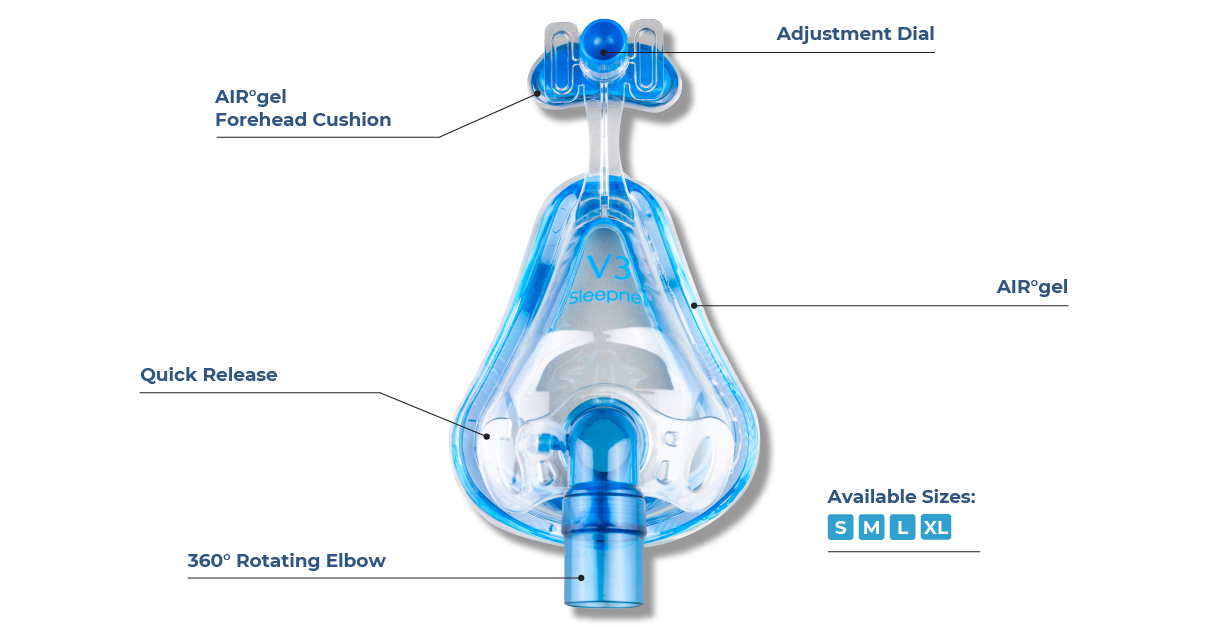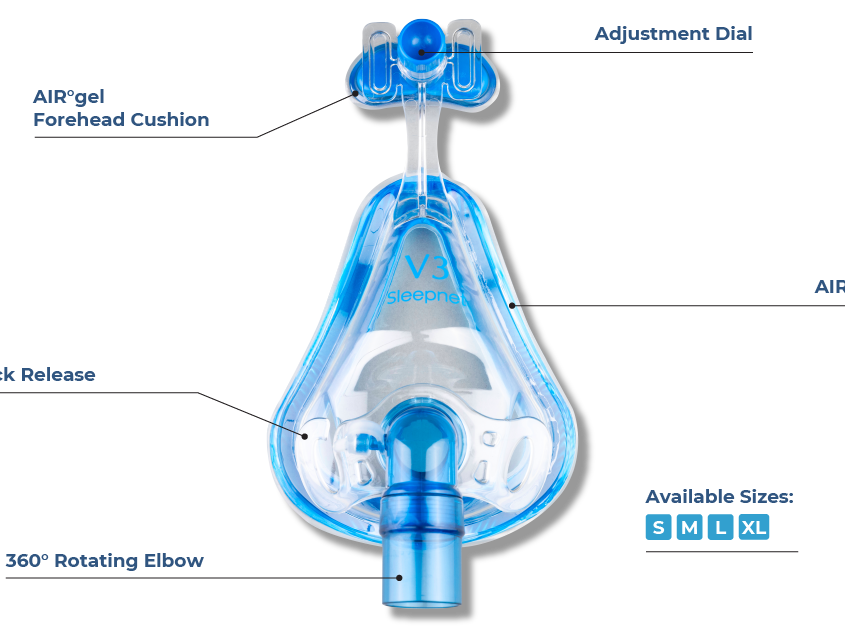Sleepnet NIV Mask Fitting Guide
By: Leigh Ann Steele
Finding the right non-invasive ventilation (NIV) mask size for your patient involves careful evaluation, guided by both expertise and prompt action, to ensure an optimal fit and the most effective therapy. Below, you’ll find a step-by-step guide to help you choose the correct NIV mask size and get the best fit for your patients.
- Assessment
First, determine the type of mask (e.g., full face or nasal) required. If needed, measure your patient’s face using appropriate tools and guides. Assess the distance between critical points like the bridge of the nose and the bottom of the chin, as well as the width of the nose. - Refer to Sizing Guides
Many mask manufacturers provide sizing guides that correlate facial measurements with the appropriate size. Check the mask’s packaging, user manual, or the manufacturer’s website for these guides. You can find Sleepnet’s size guides, instruction manuals, and videos here. - Consult Manufacturer Guidelines
Each NIV mask manufacturer may have specific guidelines for sizing. Review the manufacturer’s recommendations to understand how they correlate facial measurements to mask sizes. - Try Different Sizes
Depending on the patient’s measurements, having a few different sizes is a good idea. Start with the size that aligns with the measurements and have the next size up and down. Note that once a mask is opened or used, it must be disposed of. To help address fit issues, Sleepnet offers several masks with Custom Fit Technology. This unique feature allows users to mold, shape, and bend their NIV masks to match the unique contours of a patient’s face. The result is a personalized and snug fit that not only enhances comfort but also ensures an optimal seal. - Fit and Comfort Evaluation
Have the patient try on each mask size and assess the fit and comfort. The mask should create a secure seal without causing pressure points or discomfort. Ensure it covers the nose and/or mouth adequately and the patient can breathe comfortably. Additionally, tighten and adjust the headgear correctly. - Check Seal and Leaks
While the patient is wearing the mask, start the NIV device and observe for air leaks. A proper fit will minimize leaks and ensure effective therapy. Adjust the headgear and mask straps at all adjustment points if needed. - Patient Feedback
Ask the patient for their feedback. Are they experiencing any discomfort? Do they feel any air leaks? Their input is crucial for finding the most comfortable fit. - Document and Communicate
Keep thorough records of the mask type and size that best fits your patient. Documentation is helpful for future reference and helps to ensure consistent therapy. - Regular Reevaluation
Over time, a patient’s facial structure or preferences might change. It’s important to periodically reassess the mask fit and comfort to ensure continued effective therapy.
Remember that finding the right size NIV mask is crucial for the patient’s comfort and adherence to therapy. Additionally, each manufacturer’s mask may have different designs and sizing criteria, so it’s essential to follow the specific guidelines provided by the mask manufacturer.







